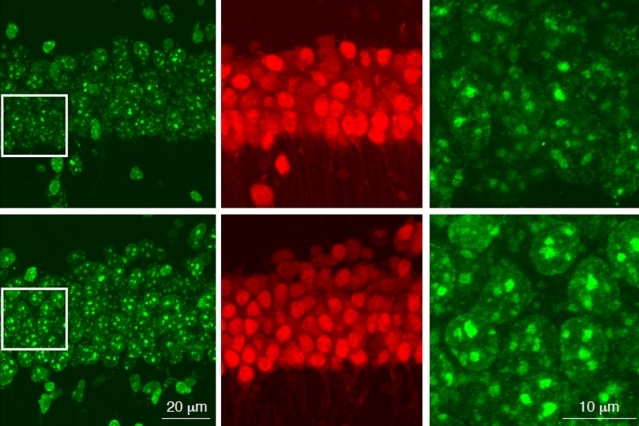The enzyme HDAC1 that helps to repair 8-oxoguanine lesions on DNA strands which is linked to age related cognitive decline and Alzheimer’s disease has been identified as a possible anti-aging molecule that acts to stimulate production of another enzyme that can heal these lesions.
The research led by MIT’s Li-Huei Tsai and Harvard’s Stephen Haggarty shows that test subjects with fewer of these lesions exhibit significantly improved cognitive performance, memory ability, and basic spatial awareness.
“It seems that HDAC1 is really an anti-aging molecule,” Tsai told MIT News.”I think this is a very broadly applicable basic biology finding, because nearly all of the human neurodegenerative diseases only happen during aging. I would speculate that activating HDAC1 is beneficial in many conditions.”
Mice were genetically engineered to not produce HDAC1 which were compared with control mice with normal levels of HDAC1 as they aged; initially there were no significant differences but over time those without the ability to produce HDAC1 developed DNA lesions at a faster rate as well as showing declines on memory testing and spatial navigation.
HDAC1 regulates the production of OGG1 enzymes that repair these DNA lesions, but as production of HDAC1 decreases with age so does the brain’s ability to heal. The team had previously determined that HDAC1 production can be stimulated using the drug exifone which was commonly used to treat dementia in the 1980s but was discontinued due to causing liver damage. In mice testing Tsai showed the drug to stimulate the production of HDAC1 and improved the cognitive ability as well as memory performance in the animals, and they had significant reduction in lesions after beginning exifone.
“This study really positions HDAC1 as a potential new drug target for age-related phenotypes, as well as neurodegeneration-associated pathology and phenotypes,” Tsai said.
The researchers are not suggesting that exifone be prescribed to humans, rather they are hopeful that a similar safer drug may be found that can also stimulate the production of HDAC1 as a possible treatment for cognitive decline and Alzheimer’s disease. The team is now investigating whether DNA damage and HDAC1 play a role in the formation of Tau tangles.




